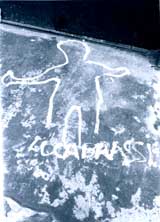Victims' Rights Movement
Victims and survivors of crime have not traditionally played much of a role in the criminal justice process, beyond testifying as witnesses. The state brings charges against a defendant, since it is the law that has been violated. But crime victims and their families began to organize during the 1980s. Programs offering crisis intervention, psychological services, and advocacy emerged, partly based on recommendations from the Presidential Task Force on Victims of Crime established in 1982. A national victims' rights movement moves to the forefront during this era.
One of the activists' most pressing demands is the right to give a victim-impact statement (VIS) prior to sentencing, so that the court does not lose sight of the human cost of the crime. The VIS is written or spoken testimony, sometimes introduced on video, in which victims describe their experiences during the crime and the effect it has had on them. This practice has been mandated in federal courts since 1982. (The Supreme Court ruled that the VIS violated the Eighth Amendment in capital cases in 1987, then reversed itself in 1991.) The Violent Crime Control and Law Enforcement Act of 1994 expands the use of the VIS at the state and local levels. An effort is launched to add a victims' rights amendment to the constitution. A bill drafted by a bipartisan congressional committee is proposed in 1996 but doesn't pass. By January 2000, however, 32 states have added victims' rights amendments to their constitutions.
 |
| Grafitti, Lower East Side, N.Y.C. Anders Goldfarb, 1992 |